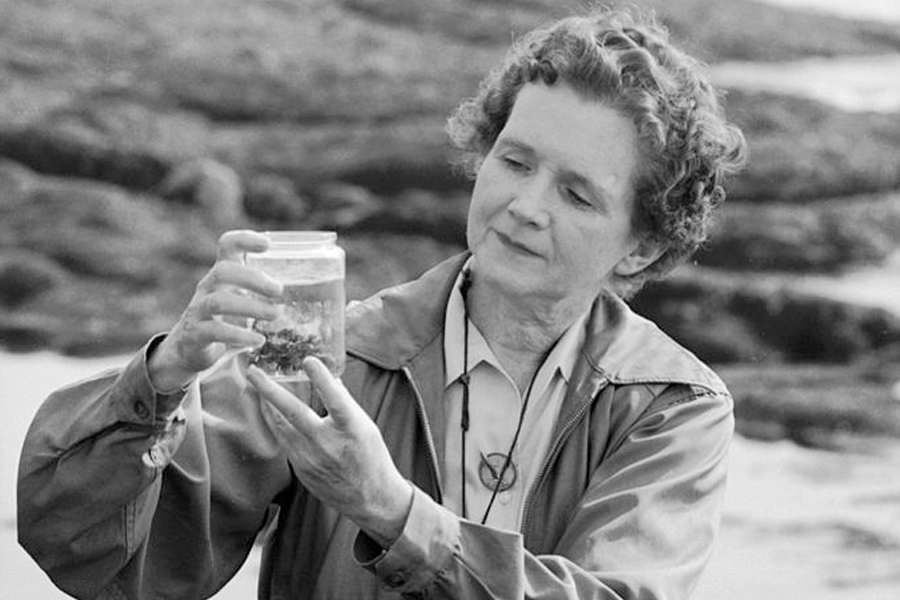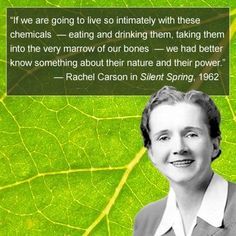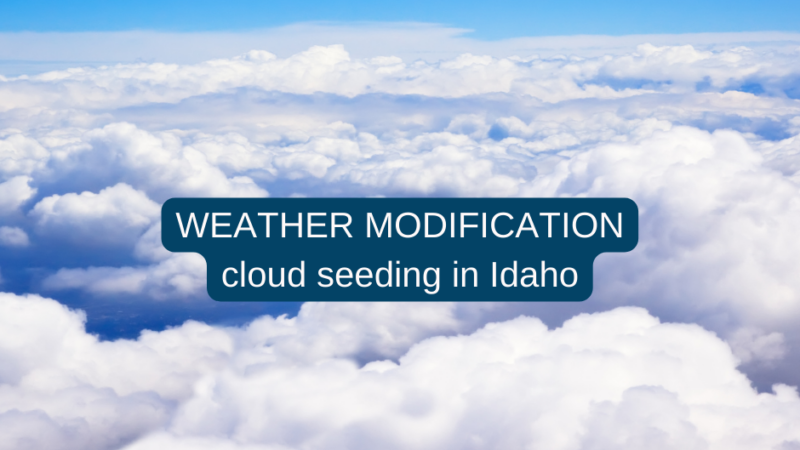How a courageous woman took on the chemical industry and raised important questions about humankind’s impact on nature.


Carson, a renowned nature author and a former marine biologist with the U.S. Fish and Wildlife Service, or FWS, was uniquely equipped to create so startling and inflammatory a book. A native of rural Pennsylvania, she had grown up with an enthusiasm for nature matched only by her love of writing and poetry. The educational brochures she wrote for FWS, as well as her published books and magazine articles, were characterized by meticulous research and a poetic evocation of her subject.
DDT, the most powerful pesticide the world had ever known, exposed nature’s vulnerability. Unlike most pesticides, whose effectiveness is limited to destroying one or two types of insects, DDT was capable of killing hundreds of different kinds at once. Developed in 1939, it first distinguished itself during World War II, clearing South Pacific islands of malaria-causing insects for U.S. troops while being used as an effective delousing powder in Europe. Its inventor was awarded the Nobel Prize.
…
Silent Spring
First serialized in The New Yorker in June 1962, the book alarmed readers across America and, not surprisingly, brought a howl of indignation from the chemical industry. “If man were to faithfully follow the teachings of Miss Carson,” complained an executive of the American Cyanamid Company, “we would return to the Dark Ages, and the insects and diseases and vermin would once again inherit the earth.” Monsanto published and distributed 5,000 copies of a brochure parodying Silent Spring entitled “The Desolate Year,” relating the devastation and inconvenience of a world where famine, disease, and insects ran amok because chemical pesticides had been banned. Some of the attacks were more personal, questioning Carson’s integrity and even her sanity.
…
Vindication
Her careful preparation, however, had paid off. Anticipating the reaction of the chemical industry, she had compiled Silent Spring as one would a lawyer’s brief, with no fewer than 55 pages of notes and a list of experts who had read and approved the manuscript. Many eminent scientists rose to her defense, and when President John F. Kennedy ordered the President’s Science Advisory Committee to examine the issues the book raised, its report thoroughly vindicated both Silent Spring and its author. As a result, DDT came under much closer government supervision and was eventually banned. The public debate moved quickly from whether pesticides were dangerous to which ones were dangerous, and the burden of proof shifted from the opponents of unrestrained pesticide use to the manufacturers.
The most important legacy of Silent Spring, though, was a new public awareness that nature was vulnerable to human intervention. Carson had made a radical proposal: that, at times, technological progress is so fundamentally at odds with natural processes that it must be curtailed.
One of the landmark books of the 20th century, Silent Spring’s message resonates loudly today, even several decades after its publication. And equally inspiring is the example of Rachel Carson herself. Against overwhelming difficulties and adversity, but motivated by her unabashed love of nature, she rose like a gladiator in its defense.




